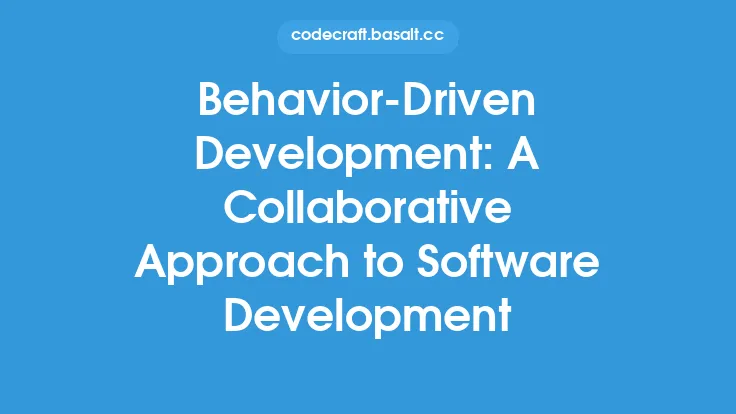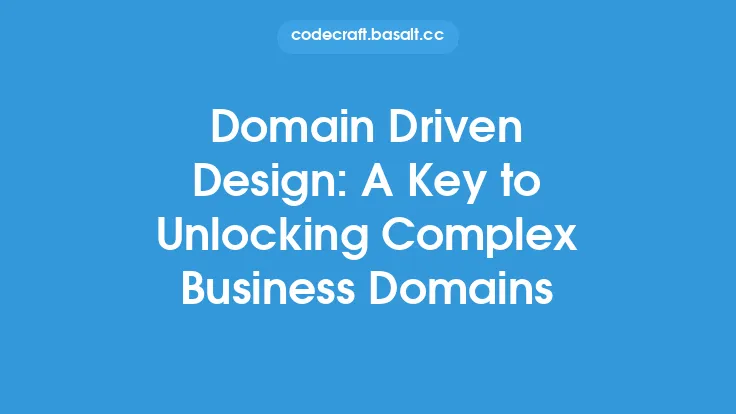Feature-Driven Development (FDD) is a model-driven approach to agile software development that emphasizes the delivery of functional features to the end-user. It was developed by Jeff De Luca and Peter Coad in the late 1990s and is based on the idea that software development should be focused on delivering tangible, working features to the user. FDD is an iterative and incremental approach that combines the benefits of agile development with the structure and discipline of traditional software development methodologies.
History and Evolution of FDD
FDD was first introduced in 1997 by Jeff De Luca and Peter Coad, who were looking for a way to improve the software development process by focusing on the delivery of functional features. At the time, many software development projects were struggling with long development cycles, poor quality, and a lack of user involvement. De Luca and Coad drew on their experience with object-oriented analysis and design, as well as their knowledge of agile development principles, to create a new approach that would emphasize the delivery of working software in short iterations. Since its introduction, FDD has been widely adopted in a variety of industries and has undergone several revisions and refinements.
Key Principles and Practices of FDD
FDD is based on several key principles and practices that are designed to ensure the delivery of high-quality, working software in short iterations. These principles and practices include:
- Feature-driven development: FDD is focused on the delivery of functional features to the end-user. Features are defined as tangible, working pieces of software that provide a specific business value.
- Iterative development: FDD uses an iterative approach to software development, with each iteration building on the previous one to deliver a working piece of software.
- Model-driven development: FDD uses a model-driven approach to software development, with a focus on creating a detailed model of the software system before beginning development.
- Collaboration: FDD emphasizes the importance of collaboration between developers, users, and other stakeholders to ensure that the software meets the needs of the business.
- Continuous testing and verification: FDD includes continuous testing and verification to ensure that the software is working as expected and meets the required quality standards.
FDD Process
The FDD process is divided into five main phases:
- Develop an overall model: The first phase of FDD is to develop an overall model of the software system. This involves creating a high-level model of the system, including its components, interfaces, and relationships.
- Build a features list: The second phase of FDD is to build a features list, which is a detailed list of the functional features that the software system will provide.
- Plan by feature: The third phase of FDD is to plan by feature, which involves prioritizing the features and creating a detailed plan for their development.
- Design by feature: The fourth phase of FDD is to design by feature, which involves creating a detailed design for each feature.
- Build by feature: The final phase of FDD is to build by feature, which involves developing the software in short iterations, with each iteration focused on delivering a specific feature.
Benefits of FDD
FDD offers several benefits, including:
- Improved quality: FDD's focus on continuous testing and verification helps to ensure that the software is of high quality and meets the required standards.
- Increased productivity: FDD's iterative approach to software development helps to improve productivity by allowing developers to focus on delivering working software in short iterations.
- Better collaboration: FDD's emphasis on collaboration helps to ensure that the software meets the needs of the business and that all stakeholders are aligned.
- Reduced risk: FDD's focus on delivering working software in short iterations helps to reduce the risk of project failure by providing early and frequent feedback.
Challenges and Limitations of FDD
While FDD offers several benefits, it also has some challenges and limitations. These include:
- Steep learning curve: FDD requires a significant amount of training and experience to implement effectively, which can be a challenge for teams that are new to agile development.
- High overhead: FDD's emphasis on modeling and planning can result in high overhead, which can be a challenge for small projects or teams with limited resources.
- Difficulty in scaling: FDD can be difficult to scale to large, complex projects, which can require significant modifications to the approach.
Comparison with Other Agile Methodologies
FDD is often compared to other agile methodologies, such as Scrum and Extreme Programming (XP). While all three methodologies share some similarities, they also have some key differences. FDD is more focused on the delivery of functional features than Scrum, which emphasizes the delivery of working software in short iterations. XP, on the other hand, is more focused on technical practices, such as pair programming and continuous integration, than FDD.
Real-World Applications of FDD
FDD has been widely adopted in a variety of industries, including finance, healthcare, and technology. It is particularly well-suited to projects that require the delivery of complex, functional software systems, such as enterprise resource planning (ERP) systems or customer relationship management (CRM) systems. FDD has also been used in a variety of contexts, including software development, system integration, and IT project management.
Conclusion
Feature-Driven Development (FDD) is a model-driven approach to agile software development that emphasizes the delivery of functional features to the end-user. It is based on several key principles and practices, including feature-driven development, iterative development, model-driven development, collaboration, and continuous testing and verification. FDD offers several benefits, including improved quality, increased productivity, better collaboration, and reduced risk. However, it also has some challenges and limitations, including a steep learning curve, high overhead, and difficulty in scaling. Despite these challenges, FDD remains a popular and effective approach to agile software development, and its principles and practices continue to influence the development of new agile methodologies.





